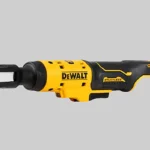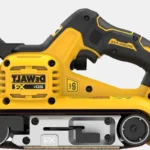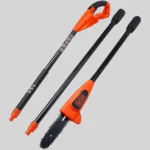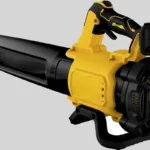There’s something about holding a power tool that feels like it was made for war. That’s the Makita 5007MG. It’s light, it’s fast, and it doesn’t flinch. Whether you’re shearing off 2x4s or chewing through dense plywood, this thing doesn’t hesitate—it just gets to work.
I’ve used plenty of circular saws, and most either feel like tanks or toys. The 5007MG hits that sweet spot. Let’s break it down like a contractor on a deadline.
What’s the Big Deal with Magnesium?
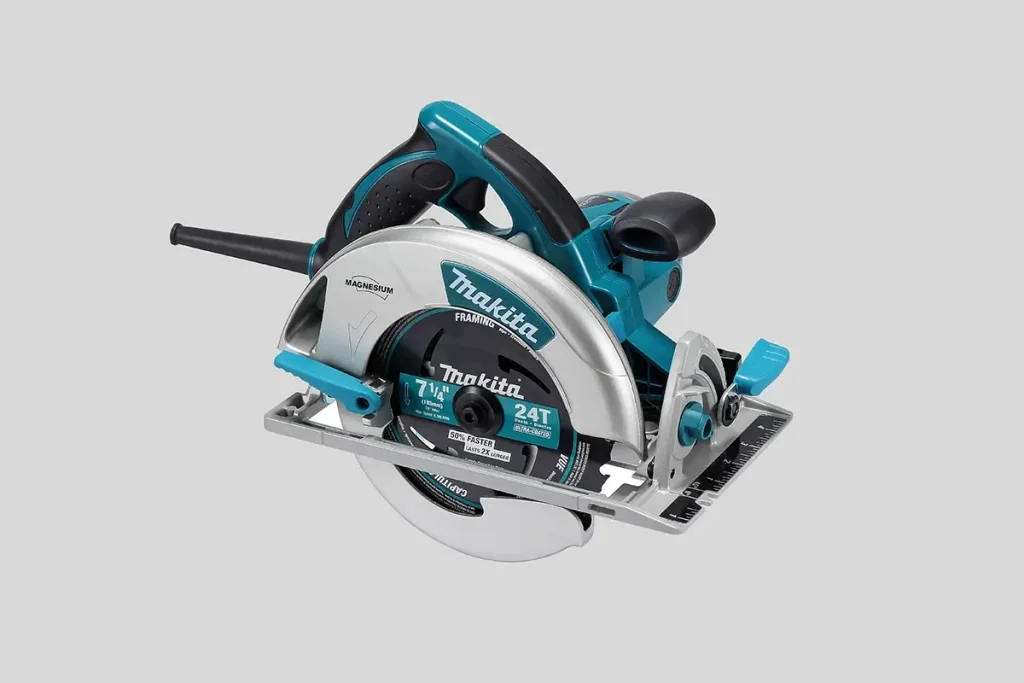
You might be wondering, “Magnesium? So what?” Here’s what: it matters. The 5007MG uses magnesium in the base and the upper guard, and that cuts down on weight without sacrificing structure. It’s not just a gimmick—it’s a real wrist-saver.
After a full day on a ladder, holding this saw overhead to trim rafters, you’ll be grateful it’s not built like a boat anchor. Lighter doesn’t mean weaker here.
Power and Speed – Is It Enough?
The motor’s rated at 15 amps with a no-load speed of 5,800 RPM. That’s serious speed. I ran it through pressure-treated 2x material and it didn’t bog down once.
Want to rip OSB all day? This saw doesn’t break a sweat. It eats through it like it’s drywall. It’s not cordless, but it sure doesn’t feel like it needs to be. For power, I’d put it up against anything in the same class.
Cutting Capacity
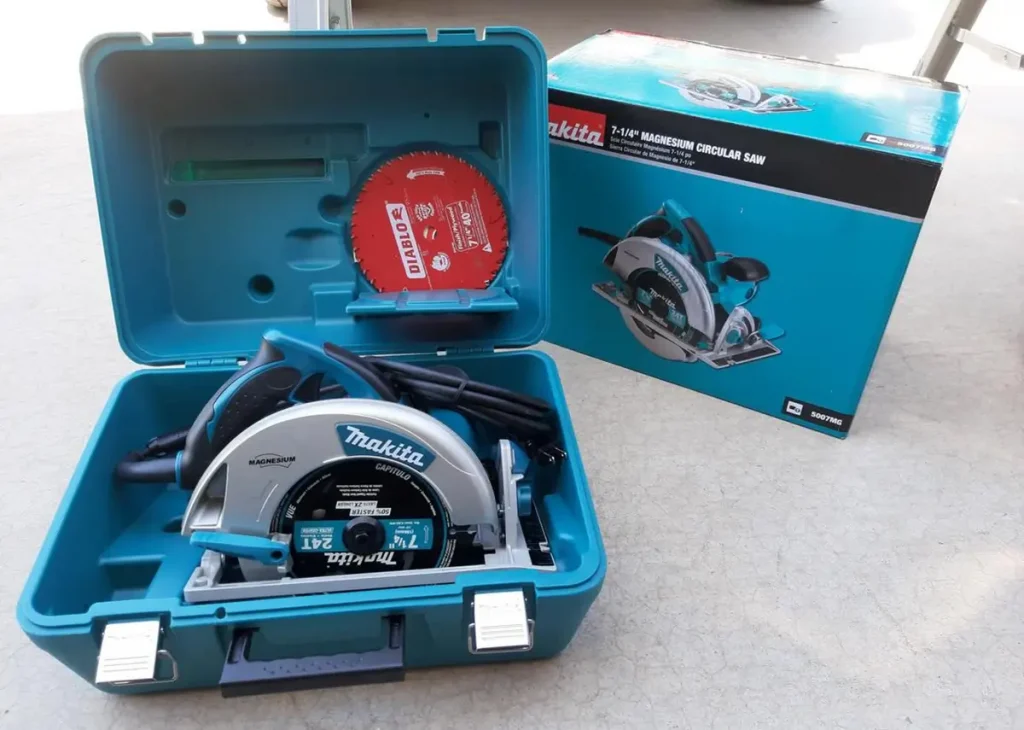
At 90 degrees, you’re getting 2-1/2 inches of depth. At 45 degrees, it’ll cut 1-3/4 inches. These are good numbers—enough to handle framing, decking, sheathing—pretty much any jobsite task short of concrete slabs.
You’ve got bevel stops at 22.5° and 45°, and it’ll go all the way to 56°. The adjustment levers are metal, not cheap plastic. They click confidently. No fighting to get the angle right, no wobble when you lock it down.
Grip, Balance, and Feel
Ever had a saw that fights you? That’s not this one. The handle’s rubber-coated and well-shaped, and the center of gravity feels natural. It doesn’t try to tip forward or back when you’re guiding it.
Blade visibility is decent. The base has a slot that lets you keep an eye on your line, and it stays relatively clean thanks to the built-in blower. I didn’t expect to care about a blower, but now I kinda want one on every saw.
LEDs – Gimmick or Useful?
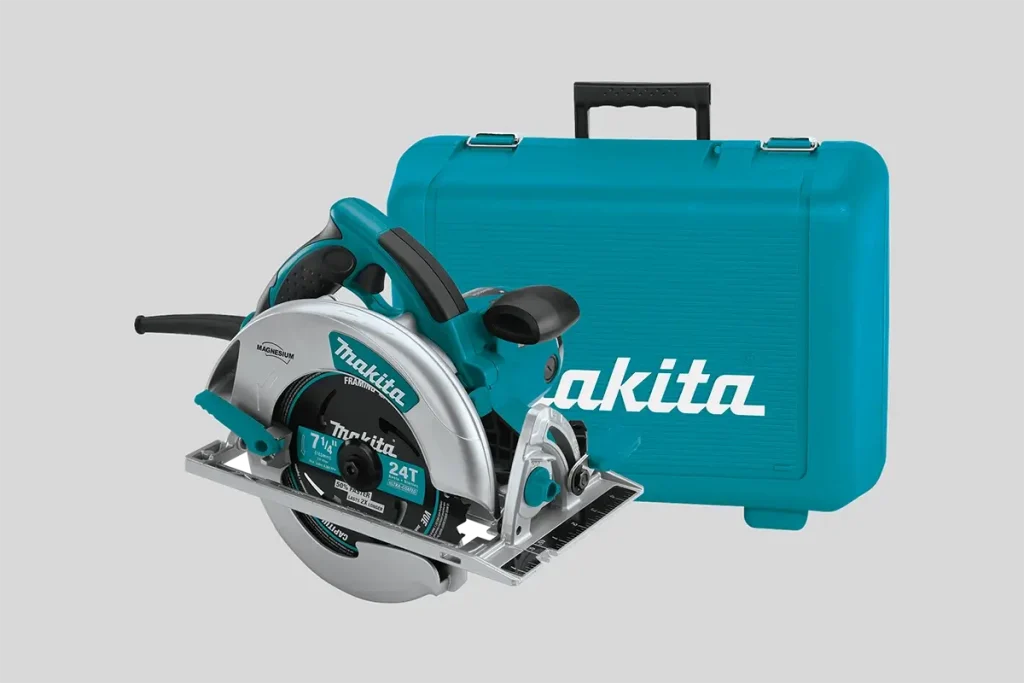
Two LEDs light up the cut line. I thought they were silly at first. Then I ended up in a dim garage on a rainy day. Now I think they’re brilliant. It’s not flashlight-bright, but it makes a difference.
If you work under overhangs, in crawlspaces, or late in the day, you’ll appreciate these little lights more than you’d expect.
Cord and Storage
Makita reinforced the cord with a tough little boot at the base. It’s flexible but not flimsy. Less likely to rip out if you yank it across the site—nice touch.
And yes, it comes with a hard plastic case. The kind that doesn’t fall apart in your truck bed. Blade wrench clips into the handle. Thoughtful stuff that makes your day just a little easier.
What’s It Like to Use All Day?
I spent an entire Saturday framing out a shed with this saw. By hour six, I wasn’t cursing my shoulders or my wrist. That’s rare. Even after 100+ cuts, the saw still felt smooth and solid. No annoying vibration, no hiccups.
This is the kind of saw you can trust on the first cut and still enjoy using at the 200th.
Pros
- Lightweight without being fragile – magnesium frame earns its keep.
- Strong motor – doesn’t slow down, even in thick cuts.
- Easy adjustments – bevel and depth levers are intuitive.
- Bright LEDs and clean cutline – visibility actually helps.
- Solid build – everything feels dialed in, not slapped together.
Cons
- No electric brake – blade coasts a bit after you release the trigger. Not ideal.
- Dust collection is meh – blower helps, but you’ll still get sawdust on your shirt.
- A bit pricey – it’s not budget gear, but it doesn’t pretend to be.
How It Stacks Up
Vs. DeWalt DWE575SB
The DeWalt’s got an electric brake and a slightly better handle feel. But it’s not as durable, and the baseplate feels flimsier. Makita wins on raw power and build.
Vs. Makita 5007F
This is the step-up model. The 5007F lacks the LEDs and has a heavier base. If you’ve got the extra few bucks, the 5007MG is the smarter buy.
Vs. Bosch CS10
Bosch has decent power, but the design feels dated. And the Makita’s magnesium build knocks a full pound off the weight. That’s a lot when you’re making overhead cuts.
Tips to Keep It Running Like New
- Blow out the dust from the motor vents every few days.
- Wipe the base clean to keep it sliding smooth.
- Keep a spare blade wrench in the case—just in case.
- Don’t wrap the cord too tight. It’ll last longer if you give it room.
Reader Questions, Answered
Does this thing have a brake?
Nope. When you let off the trigger, the blade keeps spinning for a couple of seconds. Watch your hands.
Can I cut metal with it?
With the right blade, yes. But keep in mind it’s built for wood. Occasional light metal? Fine. All-day conduit cutting? Look elsewhere.
Is it good for beginners?
Surprisingly, yes. It’s stable, not too heavy, and the visibility makes it easier to cut straight. Just practice with some scrap wood first.
What’s in the box?
Saw, blade, wrench, rip fence, hard case. Everything you need except a fresh stack of 2x4s.
Final Thoughts
The Makita 5007MG is one of those tools that feels like it’s been engineered by people who actually use it. It’s lean, mean, and doesn’t cut corners—except the ones you tell it to.
It’s not for everyone. If you’re only trimming shelves once a year, save your cash. But if you’re doing real work and want a saw that won’t let you down, this one’s earned its reputation.
This saw doesn’t try to be fancy. It’s not flashy. It just works. And sometimes, that’s exactly what you need.

Matthew Dowell
Matthew, a seasoned builder from a family of craftsmen, leads Tools Trove. His passion for tools and decades of hands-on experience fuel his commitment to providing expert reviews and insightful content. Whether you’re a pro or a DIY enthusiast, Matthew’s guidance ensures informed decisions in the world of tools.

